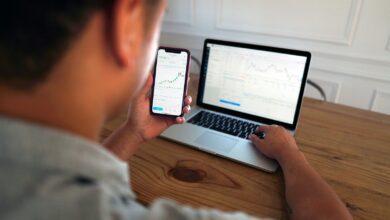Financial ratios – company performance metrics

Improving the operating margin by just 2% can significantly enhance profitability and shareholder value. Monitoring key indicators such as return on equity (ROE) and return on assets (ROA) offers clear insight into how efficiently a business utilizes its capital and assets to generate earnings. These measures provide actionable benchmarks for evaluating management effectiveness and strategic positioning.
Analyzing leverage through debt-to-equity ratios reveals the balance between borrowed funds and internal financing, highlighting potential risks in capital structure. A rising debt ratio without corresponding growth in returns may signal financial strain, whereas optimal leverage can amplify returns without compromising stability. Tracking these numbers regularly ensures informed decisions on funding and investment priorities.
Profitability metrics like gross margin and net margin serve as critical signals of operational efficiency and cost control. Comparing margins across industry peers helps identify competitive advantages or weaknesses. Incorporating these figures into comprehensive assessments allows investors and executives to pinpoint areas requiring improvement while validating successful strategies with quantifiable data.
Financial Ratios: Company Performance Metrics [Investment Insights investment-insights]
Effective evaluation of an entity’s operational and fiscal condition requires focused analysis of specific indicators. Among these, return on equity (ROE) stands out as a critical gauge, revealing how efficiently shareholder investments generate net income. For instance, firms exhibiting ROE exceeding 15% typically signal robust capital utilization, whereas those under 5% may warrant scrutiny regarding profitability and management effectiveness.
Profit margin ratios further illuminate earnings quality by comparing net income against revenues. A gross margin consistently above industry median often correlates with competitive advantage or cost leadership. Case studies from the blockchain sector reveal that projects maintaining margins above 40% during volatile market cycles demonstrate superior resilience and operational discipline.
Key Leverage Indicators and Debt Management
Examining leverage through debt-to-equity or debt-to-assets ratios provides insight into solvency risks and capital structure stability. High leverage can amplify returns but also exposes organizations to liquidity stress during economic downturns. For example, some cryptocurrency enterprises operating with debt ratios exceeding 70% have faced challenges amid tightening credit conditions, underscoring the necessity for balanced gearing strategies.
Interest coverage ratios complement this assessment by measuring the ability to service obligations from earnings before interest and taxes (EBIT). Ratios below 1.5 suggest potential difficulties in meeting fixed charges, prompting investors to question sustainability under adverse scenarios.
Operational Efficiency Through Asset Utilization
Turnover ratios such as asset turnover provide clarity on how effectively resources convert into revenue streams. In blockchain infrastructure firms, elevated asset turnover rates–above 1.0–often indicate optimized deployment of hardware and network assets relative to sales volume. Conversely, prolonged depreciation periods without corresponding revenue growth may reflect inefficiencies or technological obsolescence.
- Case Study: A decentralized finance platform increased its asset turnover from 0.7 to 1.2 within two years by streamlining transaction processes and expanding user base.
- Contrast: Another project maintained low turnover despite substantial capital infusion, signaling underutilized resources.
Liquidity Assessment for Short-Term Stability
Current and quick ratios serve as vital tools in evaluating short-term solvency, especially relevant for enterprises facing rapid market fluctuations typical in digital asset environments. A current ratio around 2 implies a comfortable buffer of liquid assets over liabilities due within one year, reducing risk exposure during funding disruptions.
The quick ratio refines this picture by excluding inventory or less liquid holdings, offering a stringent test of immediate financial flexibility crucial for maintaining operations without additional financing.
Integrative Perspectives on Value Creation
Synthesis of profitability margins with leverage metrics enables comprehensive insights into value generation versus risk assumption balance. For instance, elevated ROE driven largely by high debt levels might raise concerns about long-term viability despite attractive short-term gains.
Cognizance of these quantitative measures supports informed decision-making frameworks that align risk tolerance with growth objectives in dynamic sectors such as blockchain technology and cryptocurrency markets.
Interpreting Profitability Ratios
Evaluating a firm’s ability to generate earnings relative to its resources requires close attention to key indicators such as return on assets (ROA) and profit margin. ROA reveals how effectively the asset base converts into net income, offering insight into operational efficiency independent of capital structure. A declining ROA might signal inefficient use of assets or increased debt burden affecting net returns. Conversely, a rising margin percentage highlights improved cost management or pricing power, reflecting stronger earning capacity per revenue unit.
Profitability analysis must consider the interplay between leverage and operational results. Excessive debt increases interest expenses, directly reducing net profits and skewing profitability metrics downward despite stable sales figures. For instance, two entities with similar operating margins could exhibit vastly different net returns if one carries significantly higher financial obligations. An investor should compare earnings before interest and taxes (EBIT) alongside net margins to isolate operational strength from financing effects.
Key Profitability Indicators and Their Interpretation
Return on assets (ROA) serves as a comprehensive gauge by relating net income to total asset investment. A technology firm with an ROA above 10% typically demonstrates robust asset utilization, while sectors with heavy infrastructure demands often record lower values around 3-5%. Monitoring trends over multiple periods can uncover shifts in asset efficiency tied to strategic initiatives or market pressures.
The profit margin ratio, defined as net income divided by total revenues, quantifies what portion of sales converts into actual profit after covering all expenses including taxes and interest. High-margin businesses like software providers may maintain margins exceeding 20%, whereas retail operations often operate near single digits due to competitive pricing and inventory costs. Margin compression may indicate rising input costs or pricing challenges requiring managerial intervention.
Analyzing these ratios alongside debt levels provides a nuanced view of sustainability. For example, a manufacturing concern reporting a 12% ROA but carrying high long-term liabilities faces greater risk during economic downturns compared to a peer with similar returns but minimal borrowing. Debt service obligations can erode cash flows, limiting reinvestment potential and growth prospects even when nominal profitability appears healthy.
Regular assessment of these indicators within evolving regulatory environments also aids in anticipating market shifts that impact profitability dynamics. Upcoming changes in tax codes or interest rate adjustments necessitate recalibration of expected margins and return thresholds. Integrating scenario analysis based on such variables enhances forecasting accuracy for stakeholders aiming at resilient portfolio construction amidst volatile conditions.
Analyzing Liquidity Ratios Usage
Effective assessment of liquidity involves examining key indicators such as the current ratio and quick ratio, which reveal an entity’s ability to cover short-term obligations without relying excessively on debt financing. A current ratio above 1.5 typically suggests comfortable operational margin, while a quick ratio closer to or above 1 confirms sufficient liquid assets beyond inventory. These measurements provide clarity on cash flow stability and signal potential risks related to solvency pressures that could impair long-term viability.
Examining liquidity alongside leverage offers a more nuanced perspective on financial health. High levels of debt can strain working capital, compressing margins and increasing vulnerability during market downturns. For instance, firms with elevated debt-to-equity ratios often exhibit weakened liquidity metrics despite strong return on equity (ROE), underscoring the importance of balancing profitability against short-term asset availability. This interplay critically influences strategic decisions around capital allocation and risk management.
Practical Implications and Case Studies
Consider a technology firm with a current ratio of 2.0 but a quick ratio of 0.8; this discrepancy signals heavy reliance on inventory turnover to meet liabilities, heightening operational risk if sales falter. Conversely, in sectors like utilities where fixed assets dominate balance sheets, lower liquidity thresholds may be acceptable due to predictable cash flows supported by regulated revenue streams. Analyzing these nuances requires integrating sector-specific benchmarks with absolute figures to form actionable insights.
Recent regulatory shifts toward transparency in disclosures have enhanced the precision of liquidity evaluation by incorporating off-balance-sheet exposures and contingent liabilities into standard calculations. Incorporating comprehensive data sets enables investors to forecast potential margin compression scenarios and adjust expectations for ROE sustainability accordingly. Such integrated analysis equips stakeholders with foresight into cyclical vulnerabilities and informs prudent capital restructuring strategies aligned with evolving economic conditions.
Evaluating Leverage Ratios Impact
Leverage ratios directly influence the return on equity (ROE) by amplifying the effects of debt financing on equity holders’ gains. A higher debt load can elevate ROE when operational efficiency and profit margins remain stable, yet it simultaneously increases financial risk, potentially compressing net income during downturns. For instance, firms with a debt-to-equity ratio exceeding 2.0 often demonstrate heightened volatility in ROE, underscoring the need to balance leverage with sustainable earnings capacity.
Return on assets (ROA) offers complementary insight by measuring how effectively total assets generate net income regardless of capital structure. Excessive reliance on debt inflates interest obligations, which may depress ROA despite strong asset utilization. Case studies from sectors such as manufacturing reveal that companies maintaining moderate leverage–debt-to-assets around 40%–achieve more consistent ROA compared to peers aggressively pursuing growth through borrowing.
Interplay Between Debt Structure and Profitability Margins
Analyzing operating margin alongside leverage indicators highlights how fixed financial costs impact overall profitability. Elevated interest expenses reduce net margins even if gross or EBITDA margins remain robust. In practice, technology firms with minimal debt sustain higher net margins and more predictable earnings trajectories than leveraged counterparts in cyclical industries like energy or commodities.
The composition of liabilities also affects solvency metrics and cash flow stability. Short-term borrowings impose refinancing risks that can disrupt operational liquidity, particularly under tightening credit conditions. Conversely, long-term fixed-rate debt provides predictability but may restrict flexibility to capitalize on market opportunities or adjust capital expenditures promptly.
- Debt-to-Equity Ratio: Assesses proportion of borrowed funds relative to shareholder equity; critical for evaluating financial risk exposure.
- Interest Coverage Ratio: Measures ability to service interest payments from operating earnings; lower ratios signal distress potential.
- Total Debt/Assets: Indicates overall indebtedness level impacting asset-based returns and creditor confidence.
In comparative analysis, firms optimizing leverage maintain debt levels aligned with their return generation capabilities and industry benchmarks. For example, consumer discretionary businesses often operate within tighter leverage constraints due to demand variability affecting margin stability, while utilities tolerate higher ratios given regulated revenue streams ensuring predictable cash flows.
Forecasting implications of leverage adjustments involves scenario modeling integrating projected earnings volatility and cost of capital fluctuations. Regulatory shifts influencing borrowing costs or capital adequacy requirements necessitate continuous monitoring as deviations can materially affect both ROA and equity returns. Prudent evaluation demands integrating these dynamics within broader strategic frameworks rather than isolated metric assessment alone.
Understanding Asset Turnover Metrics
To accurately assess how effectively a business utilizes its assets to generate revenue, focus on the asset turnover ratio, which measures net sales relative to total assets. This indicator provides insight into operational efficiency by revealing how many dollars of sales are produced per dollar invested in assets. A higher figure generally signals more effective use of resources, while a lower number may indicate underutilization or inefficiencies. For instance, retail firms often exhibit elevated asset turnover due to rapid inventory movement compared to capital-intensive industries like utilities.
Incorporating debt levels alongside asset utilization metrics enriches the analysis of an enterprise’s operational health. Elevated leverage can inflate returns superficially but also increases financial risk, impacting sustainability. When juxtaposed with return on assets (ROA), these data points illuminate whether profitability stems from efficient asset use or financial structuring. For example, a firm with moderate asset turnover but high debt might report comparable ROA figures to one with superior turnover and low liabilities, underscoring the importance of holistic evaluation.
Case Studies and Sector Variations
Examining specific sectors clarifies practical application: technology companies frequently maintain lower asset turnover ratios due to intangible-heavy balance sheets yet compensate via substantial profit margins. In contrast, logistics enterprises tend toward higher turnover but slimmer margins. Analyzing Amazon’s recent filings reveals an asset turnover around 1.5x paired with rising debt levels supporting aggressive expansion; this combination yields nuanced insights into their strategic positioning versus traditional retailers with turnovers near 3x but conservative financing.
Operational margin must also be considered alongside asset efficiency metrics for comprehensive assessment. Strong margins combined with solid asset utilization suggest robust management and competitive advantage. For example, Tesla demonstrates improving asset turnover concurrently with expanding margins despite significant capital expenditures and associated debt increases–indicating enhanced scalability within complex manufacturing operations.
Ultimately, integration of multiple indicators such as leverage ratios, margin analysis, and return on assets creates a multidimensional view that surpasses isolated metric interpretation. Sophisticated investors should question whether growth arises primarily from genuine productivity improvements or increased borrowing capacity. Continuous monitoring of these variables aligned with regulatory changes and market conditions facilitates informed decision-making and anticipates shifts in valuation drivers across diverse economic environments.
Conclusion on Applying Market Value Ratios
Integrating return on assets (ROA) and return on equity (ROE) with valuation multiples provides a nuanced lens to evaluate operational efficiency alongside market expectations. Entities exhibiting high ROE yet burdened by excessive leverage signal potential risk amplified through debt, which may distort equity valuations despite solid underlying profitability. Therefore, blending these indicators enables a more calibrated interpretation of capital structure impacts on intrinsic value.
Future advancements in blockchain-based reporting and real-time data feeds will enhance the precision of such analyses, enabling dynamic recalibration of investment theses as market conditions shift. This evolution encourages stakeholders to adopt multi-dimensional frameworks that incorporate leverage ratios, earnings quality, and growth potential rather than relying solely on static market-derived figures.
Key Insights and Strategic Implications
- ROA vs. Debt Load: Monitoring asset efficiency relative to debt levels exposes vulnerabilities often masked by headline returns.
- ROE Interpretation: Elevated ROE driven by financial leverage requires scrutiny against sustainable earnings generation capacity.
- Valuation Multiples Integration: Price-to-book or price-to-earnings multiples gain depth when adjusted for capital structure differences and profitability quality.
- Regulatory Influence: Shifts in disclosure standards and transparency requirements are poised to refine ratio reliability, especially within decentralized finance ecosystems.
As analytical techniques evolve alongside emerging economic variables, professionals must continuously reassess the interplay between leverage-induced volatility and operational success indicators. This approach fosters resilient decision-making grounded in comprehensive evaluation rather than isolated snapshots, positioning investors to anticipate shifts in value drivers amid uncertain macroeconomic cycles and technological innovation trajectories.






